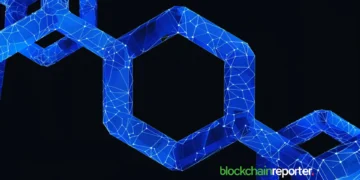Web3 is many things: a self-sovereign internet; a foundation for financial freedom; an open data exchange layer; a mechanism for speculating on catcoins. Not only is web3 many things to many people but it’s also many parts operating on many chains – too many to count. And certainly too many to bridge to and explore before moving liquidity onto the next and repeating. Ain’t nobody got time for that.
Thankfully, nobody got to do that anymore because, after years of trial and error, we’re finally entering an onchain era where the many chains can work as one. Through a combination of better infra, L3s, interoperability protocols, and other web3 wizardry, the friction that has empirically characterized moving data and assets between chains is almost eliminated. Once billed as the future of web3, omnichain is now a working reality – even if it’s yet to be universally adopted. This is the story of how it happened and the breakthroughs that made it possible.
In the Beginning There Was One
It’s easy to forget, living in a multi-chain world populated by L1s, 2s, and 3s galore, that crypto started out as omnichain. Because in the beginning there was literally only one chain to use – Bitcoin. Even when Ethereum came around in 2016, for a long time there was only one viable smart contract chain to use.
While Ethereum has since been complemented by an entire family of EVM L2s, and in certain spheres supplanted by newer networks such as Solana, Sui, and TON, it remains a major player: the main branch from which DeFi sprouts in a dozen different directions. This proliferation of networks, which has defined the last five years of crypto evolution, has been a net good in many ways; for instance we now have dedicated chains for gaming, perps, RWAs, DePIN, and much more.
The drawbacks to this rapid expansion, of course, are also evident: fragmentation, scattering users and liquidity to the four winds and leaving newcomers unsure of where to start. To illustrate the point, if a friend told you they were thinking of putting some money into DeFi, which chain would you suggest they start on? It sounds like a simple question but the answer is anything but.
While there are still no easy answers to where the natural jumping off point for DeFi should be, the good news is that all subsequent leaps between chains have now been reduced to small steps. Enhancements in interoperability haven’t slowed the explosion of new networks, but they’ve formed pathways between them that ensures wherever you roam onchain, you’re never in danger of falling off the edge of the map. Several innovations in particular have been instrumental in making this possible.
RPCs and Optimized Infra
The starting point for connecting web3 networks has been in the creation of dedicated layers designed to route data between chains, driven by RPC providers. By relieving developers of the need to run dedicated nodes for every chain they wish to connect to, RPCs have made it much easier to create multi-chain dapps that pull data from an array of sources. For example, perps protocols can be created that draw pricing from networks such as Ethereum, Bitcoin, and Solana, with real-time data feeds providing the latest onchain events.
Web3 infra providers such as dRPC embody this trend, freeing developers from costly and complex node management and empowering them to focus on creating applications with real utility. RPC networks take care of all the heavy lifting, from resource allocation to load balancing, allowing teams to connect to any network they wish in a couple of clicks. This sort of infrastructure provision forms the backbone of the omnichain landscape that’s resulted in a far more cohesive onchain environment.
While RPCs have taken care of the data delivery between chains, the other infrastructure breakthrough that’s drawn web3 networks closer together is liquidity layers. These allow users on one chain to execute swaps with liquidity sourced from other networks, resulting in better pricing and tighter spreads. Not only does it result in a better user experience, but it’s a good deal for networks and protocols too, which don’t have to worry about attracting liquidity in order to attract users. In other words, liquidity layers solve the chicken and egg problem and make new networks usable from day one.
Is That It?
Given that the sort of infrastructure improvements we’re talking about here – RPC networks as well as data and liquidity layers such as LayerZero – have been available in some shape or form for years, why has the industry continued to talk of interoperability as a future objective? The short answer is that it takes time for innovations to become ordinary. For tech to permeate and go from novel to quotidian. The internet, lest we forget, did not become a global sensation overnight.
It’s thus no surprise that there’s been a lag between interoperability layers being deployed and them being widely integrated. There’s also the fact that the first version of any technology is rarely the definitive one. To return to the internet again, it wasn’t the creation of Arpanet or even of AOL that supercharged adoption – rather it was through subsequent innovations such as the web browser that the web went mainstream. Similarly, RPCs have been around for a while, but it’s taken a second wave of providers to make omnichain connection a matter of picking your preferred chains from a dropdown menu.
Ironically, in reaching a point in crypto’s life cycle at which all chains can work as one, we’ve gone full circle to reinhabit an omnichain world. Only this time around, it’s not because we’re literally using one chain, such as Bitcoin or Ethereum – we’re using dozens. But from a user perspective, the process is seamless.
Now you can swap ETH for USDC on one chain and neither know nor care what network or pool the liquidity’s being procured from. Or as a developer, you can add support for a popular new network to your dapp in a matter of minutes without needing to recode it from scratch. That’s what omnichain means. We’ll know that interoperability is fully solved when people stop talking about it. The tech’s already here – it’s just not evenly distributed. But after years of toil, we’re almost there.























